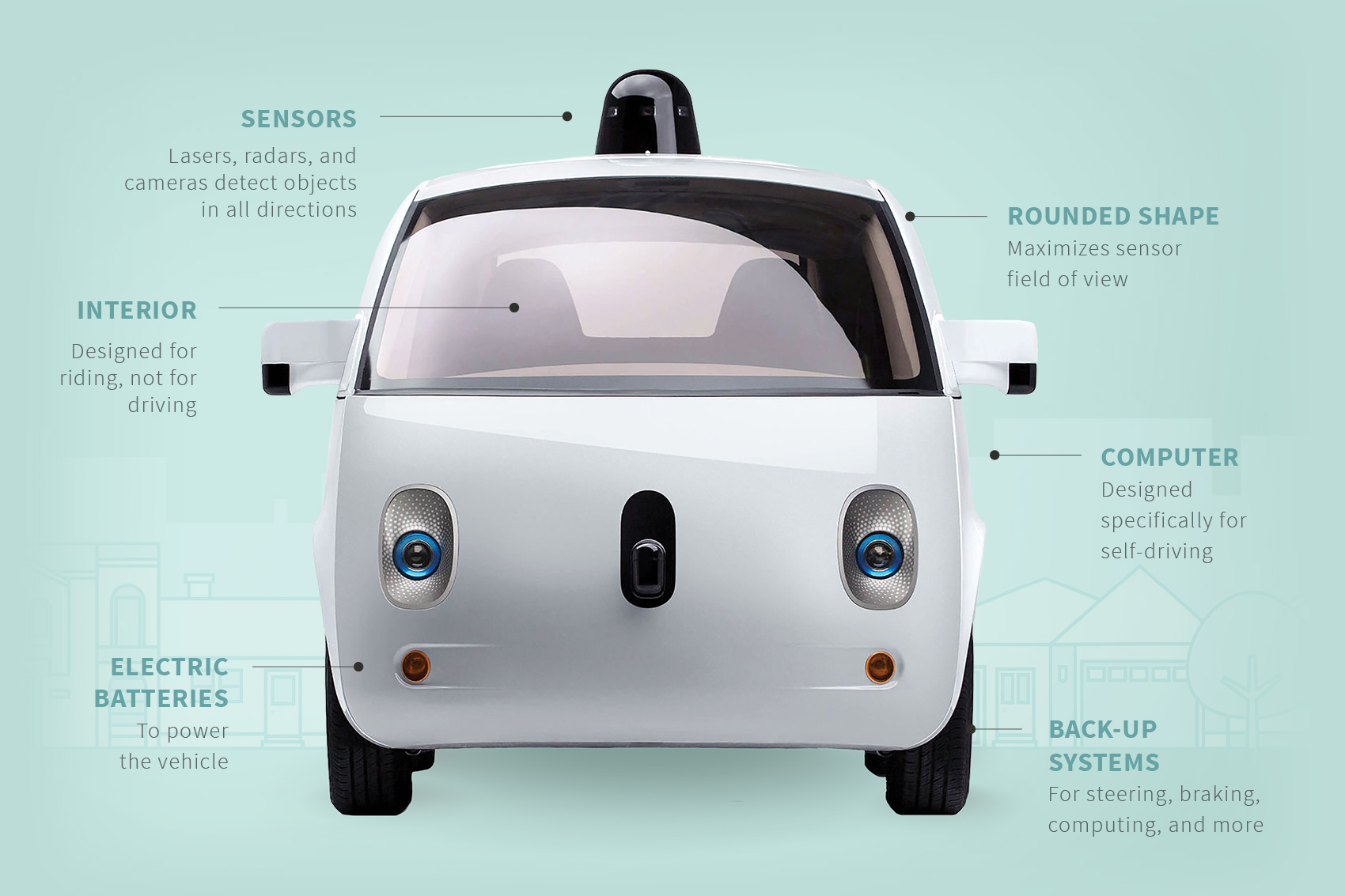
I can’t count how many times I’ve been distracted by a text message or email on my phone while driving. We’re all guilty of it.
For as long as I can remember, self-driving cars had been a long-awaited and unfulfilled sci-fi fantasy of mine. Who wouldn’t want to cruise around the world at their leisure without having to worry about directions, gas, or (knock on wood) traffic accidents? The car of the future is long overdue, and though it may not yet glide through the skies, Google’s self-driving car may be the next in a series of innovations from Tesla, Ford, and many others, all leading to a huge evolutionary step in how we think about transportation. What if you could get your produce from Point A to Point B at the push of a button? Or finally answer emails, text, or call your colleagues while on the road? Say no more. Meet Google’s driverless electric vehicle.
Your first thought may be that it looks like a marshmallow. Believe it or not, it’s meant to look unassuming, and yes, even cute. Built from the ground up and designed to put its passengers and other drivers on the road at ease with its round, Disneyesque construction, Google’s prototypical self-driving car has been seen coasting the streets of California and Texas at a brisk 25 miles per hour while carrying up to two passengers at a time. Though its capabilities are very limited at the moment, the technology behind this vehicle could trigger a massive shift in how people and, potentially, produce can be transported.


According to Google, as soon as the car turns on, it scans the environment using a combination of sensors and software to locate its position. The sensors, aided by lasers, radars, and cameras, detect the objects around the car, while the software helps to recognize objects such as other people, cars, traffic lights, and road signs. The software then predicts how those objects may react, such as another car changing lanes or a cyclist swerving through traffic, and then adjusts accordingly. No steering wheels or gas pedals required.
Google has spent years testing its cars on numerous and varied complex driving scenarios so that its software would adopt a defensive driving style that can protect its passengers and other road users. It’s a familiar behavior that anyone would be comfortable with seeing.
 Though Google’s self-driving technology is far, far away from being incorporated with other vehicles, it’s fun to think about how it can be utilized to benefit agricultural businesses. If you’re a produce road warrior, think about how much time you could save working on other projects without having to worry about driving. No longer will your focus be divided between your phone, other passengers, and the road. On the operational side of the industry, Google’s self-driving car may open up a whole new window of productivity and a ton of reduced stress. Who knows? Maybe Google’s technology will inspire other businesses to incorporate self-driving vehicles in their fleet. In fact, self-driving trucks already exist, thanks to German company Daimler AG.
Though Google’s self-driving technology is far, far away from being incorporated with other vehicles, it’s fun to think about how it can be utilized to benefit agricultural businesses. If you’re a produce road warrior, think about how much time you could save working on other projects without having to worry about driving. No longer will your focus be divided between your phone, other passengers, and the road. On the operational side of the industry, Google’s self-driving car may open up a whole new window of productivity and a ton of reduced stress. Who knows? Maybe Google’s technology will inspire other businesses to incorporate self-driving vehicles in their fleet. In fact, self-driving trucks already exist, thanks to German company Daimler AG.
German company Daimler AG has already unveiled its own self-driving commercial truck in 2015, helping to reduce accidents, road congestion, and fuel consumption.
Nevertheless, it’s unlikely that human drivers would be completely replaced and Google’s car isn’t intended to replace the tried-and-true vehicles we know of today. In fact, you may not see fully automated, self-driving cars in usage until 2020 or so. One thing that’s interesting to note - in January of 2016, the Obama administration proposed a 10-year, $4 billion plan to advance the development of self-driving cars. It is unclear how these funds will be spent as of the time of this article, but there is a good chance more testing will be involved. If you ask me though, being able to take naps and do business on those long road trips sure sounds like a great selling point.